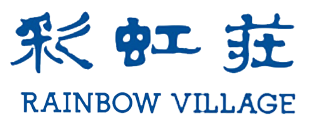-
-
-
Technology
-
Products
-
-
Contact
Development Trends in the Textile Printing Industry
1. Digitalization and Intelligence
The development of digital printing technology has driven the intelligent transformation of the textile printing industry. By introducing advanced equipment and control systems, printing enterprises can achieve:
- Automated Production: Full-process automation from pattern design to finished product printing.
- Customized Solutions: Meeting growing consumer demand for personalized and customized products.
- Rapid Response: Shortening production cycles and responding quickly to market demands.
2. Green Transformation
With increasing environmental awareness, green printing technologies are gaining more attention. Companies are adopting eco-friendly materials and processes to reduce their environmental impact. Examples include:
- Water-based Inks and Eco-friendly Dyes: Reducing chemical pollution.
- Wastewater Treatment and Reuse: Minimizing water waste and reducing wastewater discharge.
3. High Performance
Textile printing technology continues to evolve toward high performance. Special finishing techniques are used to add functional properties to fabrics, such as waterproofing, stain resistance, antibacterial protection, and flame retardancy. For example:
- Functional Printing: Incorporating antibacterial agents, flame retardants, and other functional materials during the printing process.
- Smart Printing: Developing smart-printed products with features like temperature or humidity sensing capabilities.
4. Diversification and Integration
The textile printing industry is becoming increasingly integrated with other industries, including:
- Integration with the Fashion Industry: Meeting the demand from fashion brands for unique and diverse designs.
- Integration with the Home Textile Industry: Developing printing techniques tailored for home furnishing products.
- Integration with Industrial Fabrics: Producing printed textiles with special functions, such as waterproofing, stain resistance, and flame retardancy.
keywords: Development Trends in the Textile Printing Industry
Related information
Add:NO. 315 BINZHONG ROAD, BINHAI INDUSTRIAL ZONE, KEQIAO DISTRICT
312000 SHAOXING , ZHEJIANG SHENG , CN-ZJ , CHINA , CN
E-mail:business@cnrbv.com
Tel:+86-575-85621721
© Zhejiang Rainbow Village Printed and Dyeing Co.,Ltd
COOKIES
Our website uses cookies and similar technologies to personalize the advertising shown to you and to help you get the best experience on our website. For more information, see our Privacy & Cookie Policy
COOKIES
Our website uses cookies and similar technologies to personalize the advertising shown to you and to help you get the best experience on our website. For more information, see our Privacy & Cookie Policy
These cookies are necessary for basic functions such as payment. Standard cookies cannot be turned off and do not store any of your information.
These cookies collect information, such as how many people are using our site or which pages are popular, to help us improve the customer experience. Turning these cookies off will mean we can't collect information to improve your experience.
These cookies enable the website to provide enhanced functionality and personalization. They may be set by us or by third-party providers whose services we have added to our pages. If you do not allow these cookies, some or all of these services may not function properly.
These cookies help us understand what you are interested in so that we can show you relevant advertising on other websites. Turning these cookies off will mean we are unable to show you any personalized advertising.


